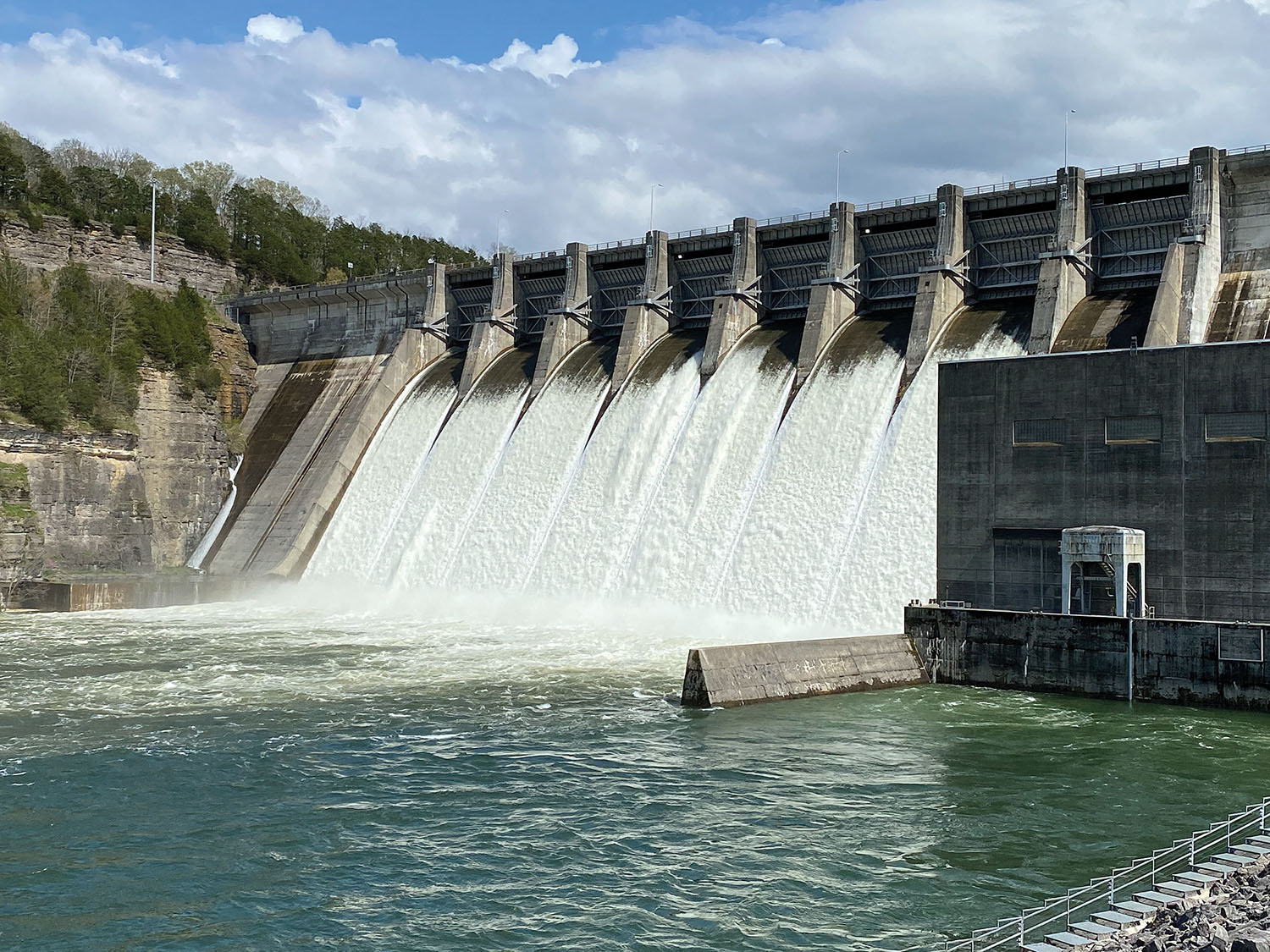Ten Nashville, Tenn., area dams in the Cumberland River basin prevented an estimated $1.8 billion in flood damages in March flooding.
Nashville received 7.01 inches of rain March 27–28, making it the second highest two-day total since records began in 1871, according to the Nashville Engineer District’s public affairs team. The Cumberland River reached 40.55 feet in Nashville, exceeding the flood stage by 0.55 feet. Natural hydrologic modeling, which predicted the height of the river without the Nashville Engineer District’s flood control projects in place, showed the river would have reached 55.7 feet without the upstream dams.
The flooding would have exceeded the May 2010 flood by nearly 4 feet and came within 0.5 feet of the flood of record in 1927.
The Nashville district operates four flood control dams upstream of Nashville. They are Wolf Creek, Dale Hollow, Center Hill and J. Percy Priest. Since they were all completed, Nashville has exceeded its flood stage six times: in 1974, 1975, 1984, 2010, 2019 and 2021, averaging a flood every 8.5 years. Prior to the upstream dams’ completion, Nashville exceeded flood stage 76 times, averaging a flood every two years, according to Corps data.
Robert Dillingham, hydraulic engineer in the Corps’ Nashville Engineer District Water Management Section, said Wolf Creek Dam on the Cumberland River in Jamestown, Ky., Dale Hollow Dam on the Obey River in Celina, Tenn., Center Hill Dam on the Caney Fork River in Lancaster, Tenn., and J. Percy Priest Dam on the Stones River in Nashville, Tenn., all large storage reservoirs, stored a combined 1.8 million acre-feet of water during the March high-water event.
“This equates to 586 billion gallons of water,” Dillingham said. “The water was safely stored behind these dams to allow downstream unregulated floodwaters to subside. Once downstream conditions allowed, this stored water was released in a controlled fashion over a period of many weeks.”
With storage reservoirs holding back water during the rain, the Cumberland River’s stream gages in Celina, Carthage and Clarksville in Tennessee were well below May 2010 levels. The gage in Celina reached 28.37 feet, well below the reading of 37.62 feet in 2010. The gage in Clarksville reached 38.39 feet, also well below the reading of 46.10 feet in 2010. The gage in Clarksville reached 47.9 feet, far below the reading of 62.58 feet in 2010.
William Terry, Water Management Section chief, said the dam projects in the Cumberland River Basin play a vital role in supporting flood risk management, navigation, hydropower, water supply, water quality and recreation. While all project purposes are important, flood risk management served as a primary driver in Congress authorizing the projects in the Cumberland River Basin, he said.
“Flooding will never be eliminated, but with the flood risk management system in place, the Corps of Engineers and agency partners often reduce the impact and damages caused by flooding,” Terry said. “I’m happy to report that during the March 2021 event that the operation of the dams saved an estimated $1.8 billion of flood damage.”
The Nashville District maintains the Cumberland River Reservoir System in partnership with the National Weather Service, Tennessee Emergency Management Agency, Kentucky Division of Emergency Management, U.S. Geological Survey and Tennessee Valley Authority.
“We enjoy great partnerships with each of these agencies and we work closely together to support operating objectives, especially with mitigating flood risk,” said Lt. Col. Sonny Avichal, Nashville Engineer District commander. “I’m especially proud of our water managers and dam operators who work together to balance holding back and releasing water as required to support the congressionally authorized purposes at each of the 10 dams in the Cumberland River Basin.”
The Water Management Section schedules reservoir releases based on anticipated river and stream responses to observed rainfall while preparing for additional forecasted rain. The section also designs, operates and maintains databases for hydrological, meteorological, reservoir, water quality and biological data.
“The entire team works hard to create hydrologic, reservoir, hydraulic, consequence and water quality computer models for real-time water management operations,” Terry said.
Caption for photo: Center Hill Dam on the Caney Fork River in Lancaster, Tenn., discharges water from its spillways April 8, 2021. (Photo by Lee Roberts, Nashville Engineer District)




